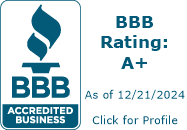When people talk about link building, they only think externally. The most important links you can build, however, are internal.
It’s time we had an important discussion about your website’s internal linking.
Why are Internal Links Important for SEO?
Internal links are important for three reasons:
- They help Google, Bing, and other search engines understand your site’s structure
Want a smart, fast, effective way to get search engines to index your new content? Make sure they can find that shit with proper internal linking.
Adding a new service page to your website? Make sure you have links pointing to it from your homepage, your header, and your footer.
Example of Crunchy Links’ Search Engine Optimization service page linked to from the top navigation
Adding a new blog post? Make sure it’s properly linked to from your top-level blog URL and from related content.
Example of internal linking between blog posts. The blue hyperlink leads to Crunchy Links’ ‘How to find Backlinks to my site‘ guide
Make it easy for search engines to find your content. Never trust them to understand your website’s structure.
- They can pass authority between your webpages
A proper internal linking strategy can help improve your rankings.
As we talked about in our Your Money, Your Life post, you need someone with expertise to write those pieces. By publishing high-level YMYL content, you can build the authority and trust of those pages.
Linking those authoritative pages to service, solution, or other conversion-based pages strategically can pass authority between those pages. This can help improve rankings across your website.
Some people will tell you it’s because of Google’s PageRank. Some will tell you that search engines reward you for having authoritative names attached to your website. The real reason this strategy works is that you’re providing a great user experience.
An Internet searcher has a question. They type that question into a search engine, which returns your website as one of the results. The searcher clicks on your content and sees the writer as particular expertise in the subject. They enjoy the article and decide to use your service or product. They click the link you’ve provided to a conversion-based page and you make a sale.
You’ve given your audience the information they need to make an informed decision, and they rewarded you for that. Search engines will reward you when you provide a great user experience. Proper internal linking does this.
- They help users to navigate between relevant pages
The final and simple reason is to make navigating your website easy for users. Make sure you have the most important pages in your top navigation and your footer and have those links on every page.
Make sure your website visitors can make it to a converting page in one click. The harder it is for them to find that page when they’re ready to become customers, the more likely they are to leave your website and find one of your competitors.
Think of your internal links as a map. You want important destinations easy to find.
What are the Different Types of Internal Links?
There are two types of internal links:
Navigational
These links help people navigate your website. You’ll use these links in your top nav:
(Screenshot of Crunchy Links’ top navigation)
You’ll also use them in your footer:
(Screenshot of Crunchy Links’ footer)
Contextual
Contextual internal links are used in the body content of a page. You can use them to link from the content on a service page to a related blog post:
(Screenshot of contextual links on Crunchy Links’ FinTech service page)
You can also link from a blog post to another related piece:
(Screenshot of contextual links in a blog post)
How to Audit your Internal Links for Issues
There are several tools you can use to help you crawl and visualize your internal linking structure. We use Sitebulb to audit our–and our client’s–sites, but here are a couple of others:
- SEMRush
- Deepcrawl
- ScreamingFrog
- Link Whisper (WordPress)
No matter which tool you use, there are a couple of internal linking issues you should look for.
Broken internal links
These links lead users and search engines to non-existent website pages. Needless to say, this isn’t a good experience.
You can fix your broken internal links by redirecting them to related, live webpages on your site.
Internal links to redirected pages
You don’t want to have your internal links point to redirecting URLs. It’s another poor user experience for your website visitors and search engines.
You can fix this issue by updating your internal links to go directly to the new destination URL. Be sure you keep your redirect intact, however—no need to remove that.
Redirect chains and loops
Internal links that trigger redirect chains and loops are difficult for search engines to crawl. They also create a poor UX.
As above, update internal links so they point to the correct live page. Additionally, remove intermediary redirects in a chain (update the redirect to go from the origin page to the end of the redirect path) or find the cause of loops.
Deep-linked important pages
Your important pages should be close to the surface of your URL structure. If it takes too long for people to find those pages, they may just stop searching.
Find ways to turn your important pages into hub pages, or make sure that they are close to the surface of your URL structure.
Orphan pages
Sometimes in the haste to create content, we add it to our site structure but forget to link to it. These are called orphaned pages, and they aren’t ideal. Without having the dedicated URL, no one will be able to find the page.
If your audit brings up orphaned pages, please link to them from other pages on your website. If it’s an old page that doesn’t matter, redirect it to a newer, relevant page.
How to set up the ideal internal link structure
Create a hub-and-spoke framework
A good internal linking strategy begins with an audit of your hub pages. Hub pages should be the pillars of your website: nothing else can be built without these pages. Identifying these pillar pages will also help you build out topic clusters that will support your hub pages.
(Screenshot of Crunchy Links’ MedTech FAQs)
Not only do we have the top nav and a link to a contact form above the fold, but we also have FAQs lower on the page with an internal link to a related medical device marketing blog post. We were only able to do this once we identified our important hub pages.
Create topic clusters with internal links
Once you’ve identified your hub pages, it’s time to create topic clusters. These clusters map out relevant pages that act as supporting content for your hub page. Cluster pages need to link back to the hub page, adding authority to your converting landing page.
(Screenshot of Crunchy Links’ CBD and Hemp Beginner’s Marketing Guide)
One of our hub pages deals with CBD marketing. We have a CBD and Hemp Beginner’s Marketing Guide as part of that topic cluster that points back to our CBD landing page. Every subsequent CBD blog post will link back to our CBD landing page as part of our internal linking strategy.
Choosing the right anchor text
We keep it simple: we try and make sure that the anchor text tells people what they should expect to find when they click on the link.
Make sure that when you’re auditing your website, you take a close look at your internal linking structure. It makes your content easy to find and access for your users, and easy to index for search engines. You can spread your website authority with proper internal linking, as well as potentially help raise the ranking of deeper pages. Not only that, but internal linking helps you build topic clusters that will enhance your content creation and boost your landing pages.
Internal linking is super important — Audit yours ASAP!

















